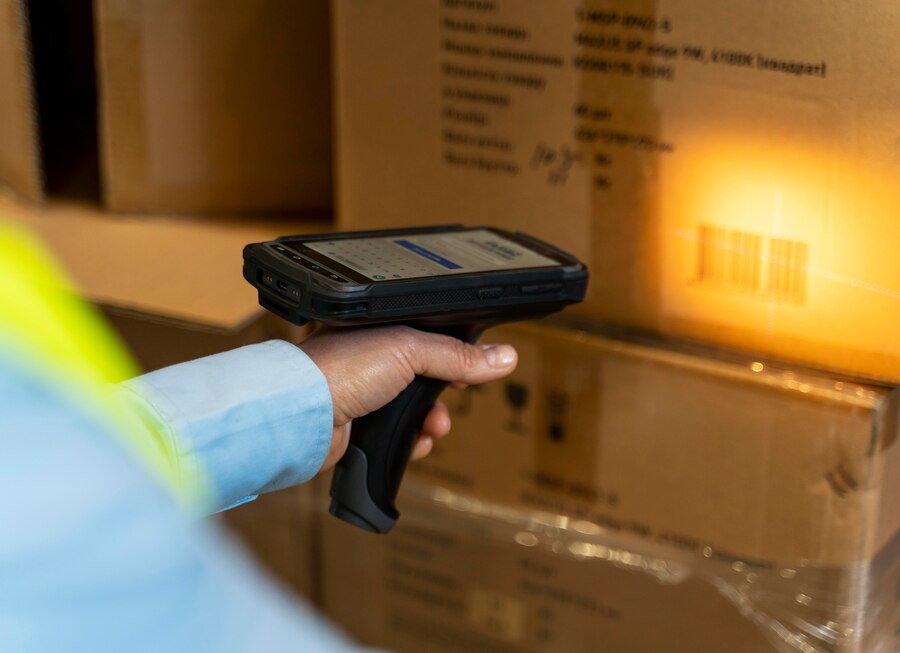
How to Streamline Order Fulfillment for Online Retail
Efficient order fulfilment is critical to the success of any eCommerce business. Customers expect fast shipping, seamless processing, and accurate deliveries. Retailers should use order fulfilment strategies that improve the supply chain. This helps cut delays and keeps costs low. Improving supply chain efficiency helps businesses. They can boost customer satisfaction, cut costs, and grow better.
This guide covers top tips for making order fulfilment easier and improving logistics in online retail.
Quick Guide: How to Streamline Order Fulfillment for Online Retail
- Key Steps in Order Fulfillment:
- Order Processing: Receive and verify customer orders.
- Inventory Management: Ensure stock availability.
- Picking & Packing: Select and package products securely.
- Shipping & Delivery: Dispatch orders using efficient shipping methods.
- Returns Handling: Manage product returns and exchanges smoothly.
- Choosing the Right Fulfilment Model:
- In-House Fulfillment: Retailers manage logistics independently.
- Pros: More control over branding and quality.
- Cons: Higher operational costs.
- Third-Party Logistics (3PL): Outsourcing to providers like Amazon FBA.
- Pros: Lower shipping costs and scalability.
- Cons: Less control over the process.
- Dropshipping: Suppliers ship directly to customers.
- Pros: Low overhead costs.
- Cons: Limited quality control.
- Hybrid Fulfillment: Combines in-house and 3PL services.
- Pros: Flexible and scalable.
- Cons: Complex inventory management.
- Warehouse Optimisation Tips:
- Use zone-based storage to reduce picking time.
- Automate with WMS and AI-powered inventory forecasting.
- Conduct regular cycle counts to prevent stock discrepancies.
- Fast Shipping Strategies:
- Offer multiple shipping options (standard, expedited, same-day).
- Use regional carriers for cost-effective local deliveries.
- Negotiate bulk rates with major carriers.
- Reduce dimensional weight pricing by optimising packaging.
- Improving Order Processing Efficiency:
- Use order management systems (OMS) for automated processing.
- Implement batch picking and automated packing systems.
- Verify orders with AI-powered quality control.
- Managing Returns Effectively:
- Offer prepaid return labels for customer convenience.
- Use self-service return portals.
- Automate refund processing to minimise delays.
- Leveraging Technology:
- AI & Machine Learning: For demand forecasting and chatbot order inquiries.
- IoT & Smart Warehousing: Real-time inventory tracking and predictive maintenance.
- Blockchain: Improves supply chain transparency and reduces fraud.
Pro Tip:
Track key metrics like order accuracy, fulfilment time, and return rates. Use this data to optimise processes and enhance customer satisfaction.
Important Tip:
Use customer feedback and A/B testing to continuously refine your fulfilment strategies, ensuring you remain competitive in the evolving eCommerce landscape.
1. Understanding the Order Fulfillment Process

a) What is Order Fulfillment?
Order fulfilment is the full process of getting an order to a customer. It includes receiving, processing, packing, and delivering the order. A well-optimized fulfilment process ensures timely deliveries and minimizes errors.
b) Key Steps in Order Fulfillment
- Order Processing – Receiving and verifying the customer’s order.
- Inventory Management – Ensuring products are available for shipping.
- Picking & Packing – Selecting the ordered items and packaging them securely.
- Shipping & Delivery – Dispatching the order using an efficient shipping method.
- Returns Handling – Managing product returns and exchanges efficiently.
c) Common Challenges in Order Fulfillment
- Slow Shipping Times – Delayed deliveries due to inefficient logistics.
- Inventory Errors – Stock discrepancies causing fulfilment issues.
- High Fulfillment Costs – Expensive warehousing, labour, and shipping fees.
- Returns Management – Complex processes leading to customer dissatisfaction.
- Supply Chain Disruptions – External factors impacting smooth operations.
2. Choosing the Right Order Fulfillment Model
Retailers must select a fulfilment model that aligns with their business goals and resources.
a) In-House Fulfillment
- The retailer manages warehousing, inventory, and shipping independently.
- Best for businesses with full control over logistics.
- Pros: Greater control, brand consistency, and personalised customer experience.
- Cons: High operational costs, labour-intensive, and requires warehouse space.
b) Third-Party Logistics (3PL)
- Outsourcing fulfilment to a logistics provider like ShipBob, Red Stag Fulfillment, or Amazon FBA.
- Pros: Reduced workload, lower shipping rates, and scalability.
- Cons: Less control over branding and fulfilment process.
c) Dropshipping
- Products are shipped directly from suppliers to customers.
- Pros: Low startup costs, no inventory management needed.
- Cons: Limited control over shipping times and product quality.
d) Hybrid Fulfillment
- A combination of in-house fulfilment and 3PL services.
- Pros: Flexibility, scalability, and cost-efficiency.
- Cons: Requires complex inventory synchronisation.
3. Optimizing Warehouse Management for Faster Fulfillment

a) Efficient Warehouse Layout
- Use a zone-based storage system for easy product access.
- Store fast-moving items closer to packing stations.
- Implement barcode scanning and RFID tracking for accurate inventory control.
b) Warehouse Automation
- Use automated picking systems like conveyor belts and robots.
- Implement AI-powered inventory forecasting to prevent stockouts.
- Use warehouse management software (WMS) for real-time inventory tracking.
c) Inventory Accuracy
- Conduct regular cycle counts to prevent discrepancies.
- Use predictive analytics to adjust stock levels based on demand trends.
- Integrate real-time inventory syncing across sales channels.
4. Implementing Fast Shipping Strategies for eCommerce
a) Offering Multiple Shipping Options
- Standard Shipping: Affordable but slower delivery.
- Expedited Shipping: Faster delivery at a higher cost.
- Same-Day & Next-Day Shipping: Ideal for high-demand products.
- Free Shipping Thresholds: Encourages larger purchases.
b) Partnering with Reliable Carriers
- Work with carriers like UPS, FedEx, DHL, and USPS.
- Use regional carriers for cost-effective local deliveries.
- Implement multi-carrier shipping software to compare rates and delivery times.
c) Reducing Shipping Costs
- Negotiate bulk shipping rates with carriers.
- Use flat-rate shipping for better cost predictability.
- Optimise packaging to reduce dimensional weight pricing.
5. Enhancing Order Processing Efficiency
a) Automating Order Management
- Use order management systems (OMS) to process orders quickly.
- Integrate eCommerce platforms with inventory and shipping tools.
- Enable automatic order routing to the nearest fulfilment centre.
b) Streamlining the Picking & Packing Process
- Implement batch picking for high-volume orders.
- Use pick-to-light and voice-picking systems for accuracy.
- Optimise packaging materials for cost and sustainability.
c) Reducing Processing Errors
- Double-check orders using AI-powered verification systems.
- Implement quality control checkpoints before shipping.
- Provide real-time tracking updates to customers.
6. Managing Returns & Reverse Logistics Efficiently

a) Simplifying the Returns Process
- Offer prepaid return labels for easy customer returns.
- Implement self-service returns portals.
- Automate refund processing to reduce delays.
b) Minimizing Return-Related Costs
- Analyse return reasons to reduce avoidable returns.
- Resell returned items through refurbished or clearance sales.
- Implement a returns management system (RMS) for tracking.
c) Enhancing Customer Satisfaction
- Provide instant refunds for certain return categories.
- Offer store credit incentives to reduce refund losses.
- Improve product descriptions and images to reduce mismatched expectations.
7. Leveraging Technology for Order Fulfillment Optimization
a) Artificial Intelligence & Machine Learning
- Use AI-driven demand forecasting for inventory planning.
- Implement chatbots to handle order inquiries instantly.
- Analyse customer buying behaviour to improve fulfilment efficiency.
b) Internet of Things (IoT) & Smart Warehousing
- Deploy IoT sensors for real-time inventory tracking.
- Implement smart conveyor belts for automated sorting.
- Use predictive maintenance tools to prevent warehouse downtime.
c) Blockchain for Supply Chain Transparency
- Enhance security with blockchain-based tracking.
- Reduce fraud and errors with smart contracts.
- Provide customers with real-time shipment tracking.
8. Measuring & Improving Order Fulfillment Performance
a) Key Metrics to Track
- Order Accuracy Rate: Percentage of orders delivered correctly.
- Average Fulfillment Time: Time taken to process and ship an order.
- Return Rate: Percentage of orders returned by customers.
- Cart Abandonment Rate: Measures the impact of shipping costs on conversions.
- Customer Satisfaction Score (CSAT): Tracks post-purchase experience.
b) Continuous Improvement Strategies
- Conduct A/B testing on different fulfilment methods.
- Regularly train warehouse staff on best practices.
- Use customer feedback to refine fulfilment processes.
FAQs: How to Streamline Order Fulfillment for Online Retail
- What is order fulfilment in online retail?
It is the process of receiving, processing, packing, shipping, and delivering customer orders. - How can retailers speed up order fulfilment?
Use warehouse automation, batch picking, and multi-carrier shipping software. - What is the best fulfilment model for small retailers?
Dropshipping is cost-effective, while 3PL offers scalability without high overhead costs. - What technology improves fulfilment efficiency?
AI for demand forecasting, IoT for real-time inventory tracking, and blockchain for transparency. - How can retailers reduce shipping costs?
Negotiate bulk rates, use flat-rate shipping, and optimise packaging dimensions.
Conclusion
To streamline order fulfilment in online retail, balance technology, logistics, and customer-focused strategies. By improving warehouse efficiency, automating tasks, and using fast shipping methods, retailers can boost supply chain efficiency and cut costs.
Using the right order fulfilment strategies helps speed up shipping for eCommerce. This also boosts customer satisfaction and enhances brand reputation. Businesses can grow and compete in eCommerce by improving their processes and adopting new technologies.


